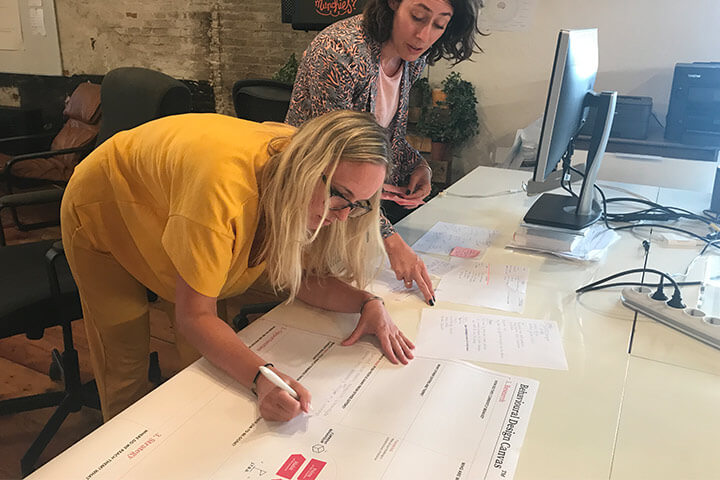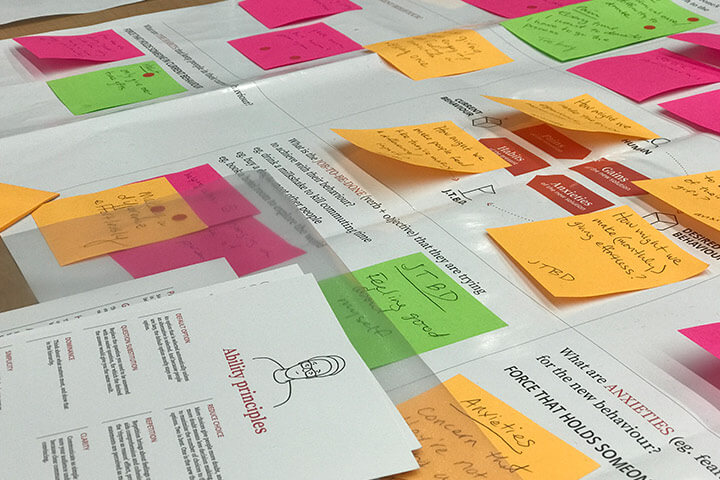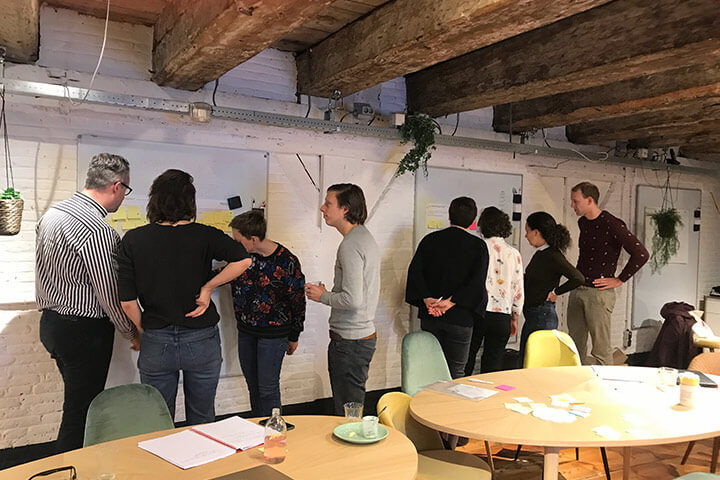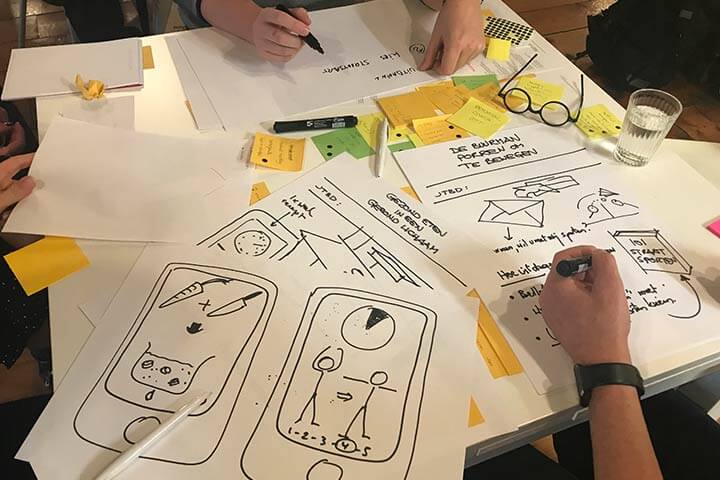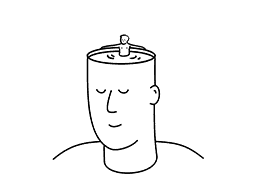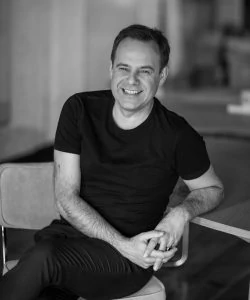I have been a full-time entrepreneur for ten years. I can’t say it was my destiny to become one. I somewhat stumbled into it. My dad was a truck driver, and my mom is – to this date – the longest selling Tupperware saleswoman in Europe. And my academic career – A Master in Clinical Psychology – didn’t point in the entrepreneurial direction either. It was a moment of hybris that pulled the trigger for us. One day, about ten years ago, Astrid and I concluded an argument with our former employer in a bar with the words: “…In that case, we’ll quit”. ; The terrifying impact of that impulsive decision only daunted us on the way back home. We had no idea on how to run a company.
Why we sucked at it
In those ten years, we had to learn how to build and manage a company. And for quite some time, we sucked at it—big time. We were geeks and strategic planners. We figured out how to sell projects and get the work done with a growing staff, but we had no clue what we needed to build a healthy company and high-performance team culture. We were both exhausting our staff and ourselves. We made all the classic startup failures of working too much inside the company instead of working on the company’s growth. We would win a big project, work day and night to finish it, only to realise that we didn’t spend time on marketing or sales in the meantime. Nearly every entrepreneur has probably gone through this manic-depressive cycle between euphoria and despair.
The Behavioural Design Challenge
It was only gradually and with much great coaching that we realised that we needed to approach the company as behavioural designers: We needed to figure out which desired behaviours lead to our desired outcomes. We needed to figure out the deeper needs – or Jobs-to-be-Done – of our staff and clients. We had to remove obstacles that prevent the desired behaviours from happening. And we needed to trigger successful behaviours, turn them into habits and hope that these habits would compound.
Let me share some of the behavioural insights that helped us transform SUE from a startup to a healthy scaleup. (read further below the banner)
Want to find out how behavioural science can amplify your impact?
Please contact us for a 'Sixty with SUE': an hour of non-binding advice in which we can see how we can use Behavioural Design to tackle your project challenge or strategic problem.
1. Understanding our client’s Job-to-be-Done
Our clients don’t want behavioural design; they want a successful outcome. They hope for evidence that their new product or service will work. They want a breakthrough in understanding how to connect with their customers. They want a validated strategy to shape the behaviour of their target audience. They are looking for ways to persuade their stakeholders with insights into how real customers reacted to their offering. Some clients want their whole team to use the behavioural design framework as a shared language for understanding their customers. Understanding the jobs they have in their company for hiring us was the key to designing our offering.
More on Job-to-be-Done Thinking: Here.
2. Understanding our Staff’s Job-to-be-Done
The people who work for SUE dedicate their talent, time, energy, and creativity to our company. They work incredibly hard to create wow experiences for our clients. In the meantime, they have to deal with creative uncertainty, manage group dynamics, and design and test interventions. That’s quite demanding. For that, they expect something in return from us: respect, belonging, recognition, adventure, protection, growth, excitement, purpose. Only when we do a decent job fulfilling these needs can they feel free, confident, and inspired to do great work. The moments we have everything exactly right are scarce, but we work hard to fulfil these basic needs. Without their talent, energy and dedication, there would be no SUE.
3. Make desired behaviour easy
Two of the best decisions we ever made were to standardise our process and transform our know-how into a method. We have three training formats and three sprint formats. That’s it. These interventions make it far easier to train our staff; it allows us to scale up when needed, contributing to higher quality output. In a Behavioural Design Sprint, the only thing we need to focus on is the creative output. The rest is taken care of by the Behavioural Design Sprint process. Contrary to what most people think, a well-designed process is a rocket engine for creativity.
4. Design a growth habit
The final behavioural design intervention is the design of a growth habit. A growth habit is a disciplined, rhythmic way of working on the four pillars of a healthy organisation: 1) satisfied customers, 2) healthy business metrics, 3) Motivated staff, and 4) future proof roadmap. We now use these four pillars as the basic structure for our weekly Management Team meeting. We assess where we should improve and set up actions to move the needle in the right direction.
To commit to a growth habit is something we’ve been struggling with for too long. In the early startup phase, it’s hard to be disciplined when you’re playing ten different roles. But gradually, we learned that – just like with getting in shape – building a disciplined growth habit is the key to running a great company.
Would you like to power up your team with Behavioural Intelligence?
If your team misses Behavioural Design skills, be sure to check out our in-company training. Bringing your talent up-to-speed with the latest in behavioural science and teaching them hands-on methods and tools to apply this in practice right away. Tailormade to your organisation.
More blogs on the link between behavioural design and entrepreneurship:
- The Behavioural Design of Applying for a Job A must-read for everyone who is applying for a job.
- The behavioural design of a great team (the title speaks for itself)
- How Jeff Bezos designs team behaviour (on the remarkable culture at Amazon.com)
- How to design an innovation habit (why some companies are more innovative)
- The psychological price of being rational is being unlikeable (why innovative people need to be courageous)
- How to make an agile team customer-centric?
- Three techniques that will supercharge your team’s creativity
- The rise of the Chief Behavioural Officer
Cover visual by Isaac Smith on Unsplash.
How do you do. Our name is SUE.
Do you want to learn more?
Suppose you want to learn more about how influence works. In that case, you might want to consider joining our Behavioural Design Academy, our officially accredited educational institution that already trained 2500+ people from 45+ countries in applied Behavioural Design. Or book an in-company training or one-day workshop for your team. In our top-notch training, we teach the Behavioural Design Method© and the Influence Framework©. Two powerful tools to make behavioural change happen in practice.
You can also hire SUE to help you to bring an innovative perspective on your product, service, policy or marketing. In a Behavioural Design Sprint, we help you shape choice and desired behaviours using a mix of behavioural psychology and creativity.
You can download the Behavioural Design Fundamentals Course brochure, contact us here or subscribe to our Behavioural Design Digest. This is our weekly newsletter in which we deconstruct how influence works in work, life and society.
Or maybe, you’re just curious about SUE | Behavioural Design. Here’s where you can read our backstory.
